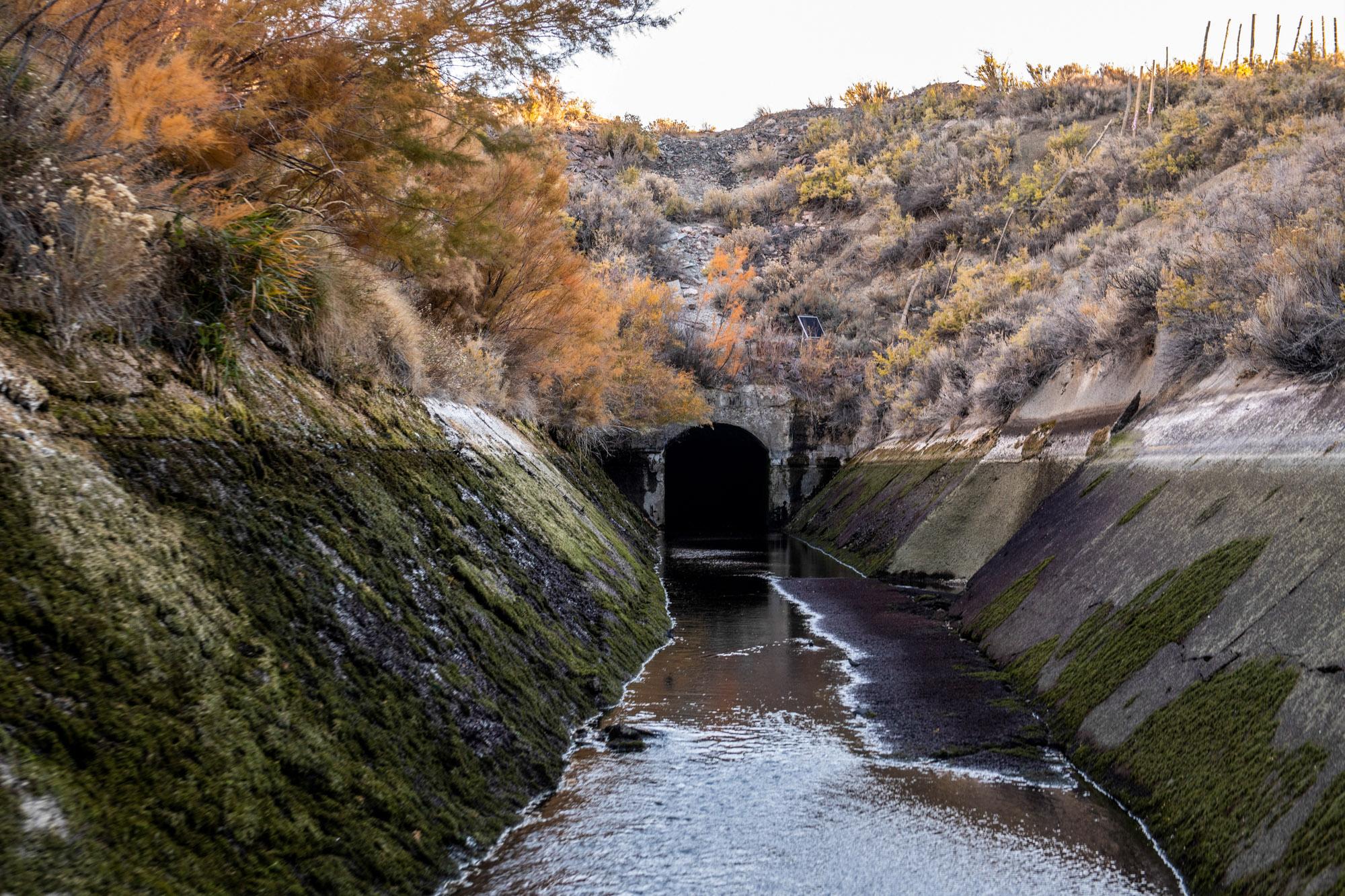
Driving through the desert outside of Grand Junction is a trip through a vast, flat land with just a few houses breaking up the parched vistas.
It’s nothing like the Uncompahgre Valley, just a bit farther down the road, with its lush fields and orchards around the city of Montrose and beyond.
The availability of water, of course, is the difference. But hardly any falls from the sky. And that’s why I was sitting on a bench seat in the back of an old, idling Chevy the other morning, as I chatted with a small group of folks bundled up in jackets and raincoats. We were all waiting to see exactly how the area gets its lifeblood.
At 5.8 miles, the Gunnison Tunnel was once the longest irrigation tunnel in the world. And that pickup, dubbed the “Tunnel Limo” has traveled through countless times. It carries people into the tunnel, and some have waited a lifetime to go inside.
So when Loren Dikeman’s daughter asked if he wanted to go, he did not hesitate.
“Oh yeah!” he remembers telling her. “I said, ‘I've been waiting on this since 1951.’”
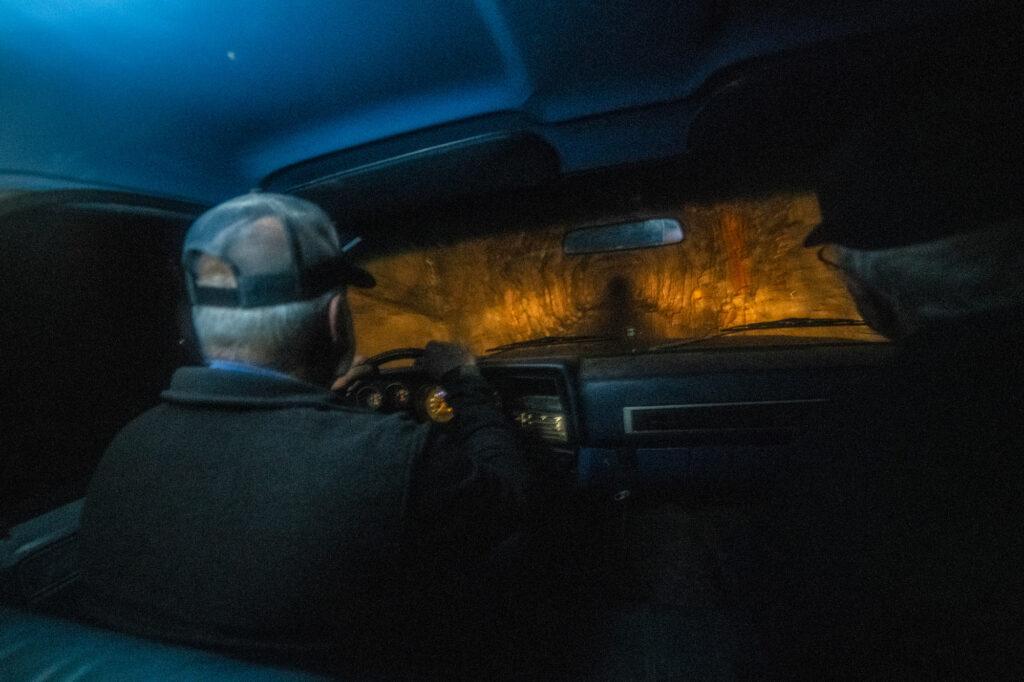
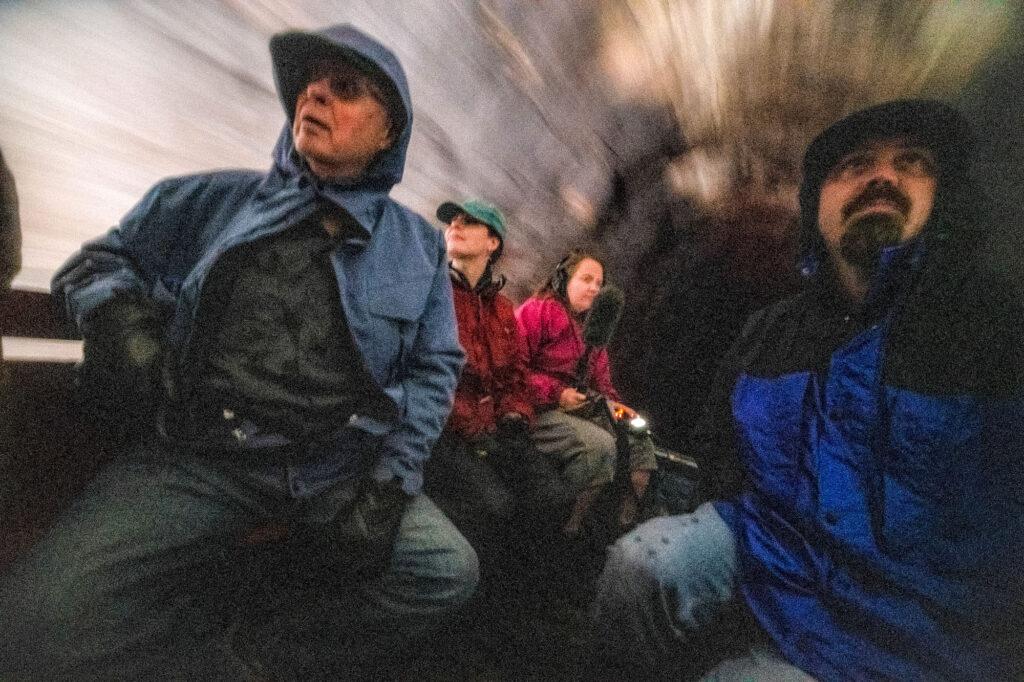
That’s when his family moved to the area. Now, 70 years later, Dikeman got his golden ticket because his daughter, Maria Nichols, works for the Uncompahgre Valley Water Users Association, which maintains the tunnel. That day was her first time through, as well. I asked Nichols if she’s claustrophobic.
“I don’t know yet,” she said, with a laugh. “We’ll find out!”
We were a few miles from downtown Montrose, with not much around except the farmland this tunnel sustains. We drove a bit down a crunchy dirt road, before turning cautiously into a canal, with only a bit of shallow water along the bottom.
We inched forward, surrounded by tall, sloping canal sides, until the West Portal of the Gunnison Tunnel appeared, looking like a train tunnel — like something you are not supposed to enter.
But then we did, and instantly found ourselves in a dark, echoing world. The truck’s headlights shone on the narrow cement walls around us. It’s 11 feet wide and 13 feet tall, but the sides felt aggressively snug.
During much of the spring and summer, the tunnel is entirely full of water, but we were only driving through a few inches of muck. A very un-Colorado feeling of humidity hit our faces, and I asked Nichols to describe the smell.
“Musty,” she replied, with another friendly laugh.
It was also kind of fishy and briney, like the harbor I used to visit as a kid. Big drips from the ceiling slapped down on our heads.
And all the while, we kept heading deeper underground.
Photographer William Woody pointed out the entrance was now far behind us, only a tiny burst of light.
“There it is! Just a dot,” he said, with the kind of excitement that told me he was definitely not feeling the fear of enclosed spaces.
“I mean, we're basically going underground into the Black Canyon,” Woody went on, unworried.
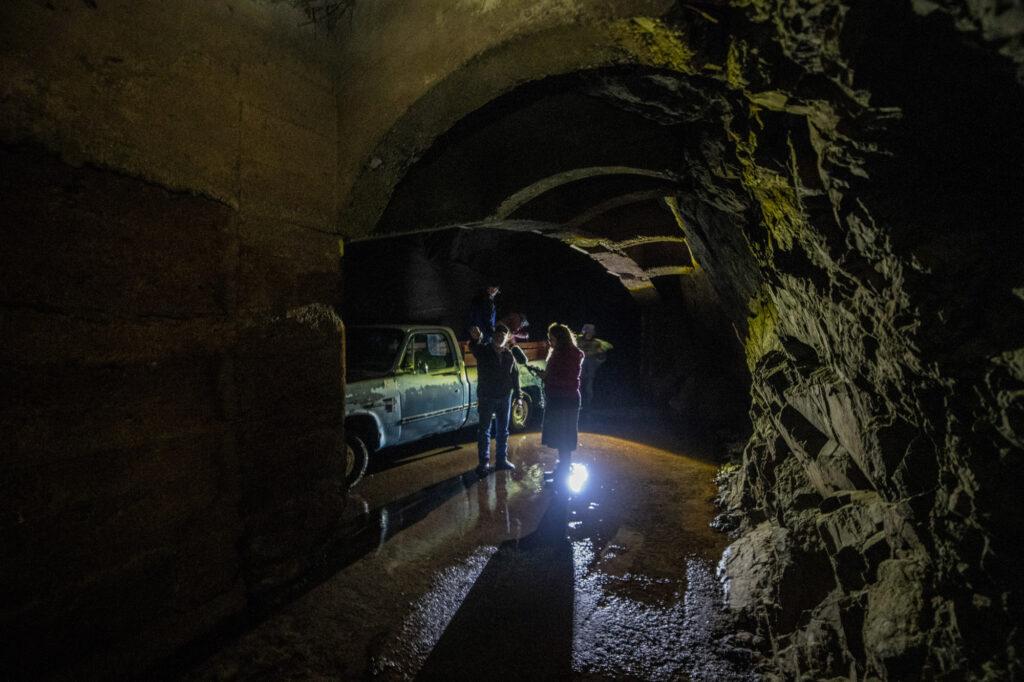
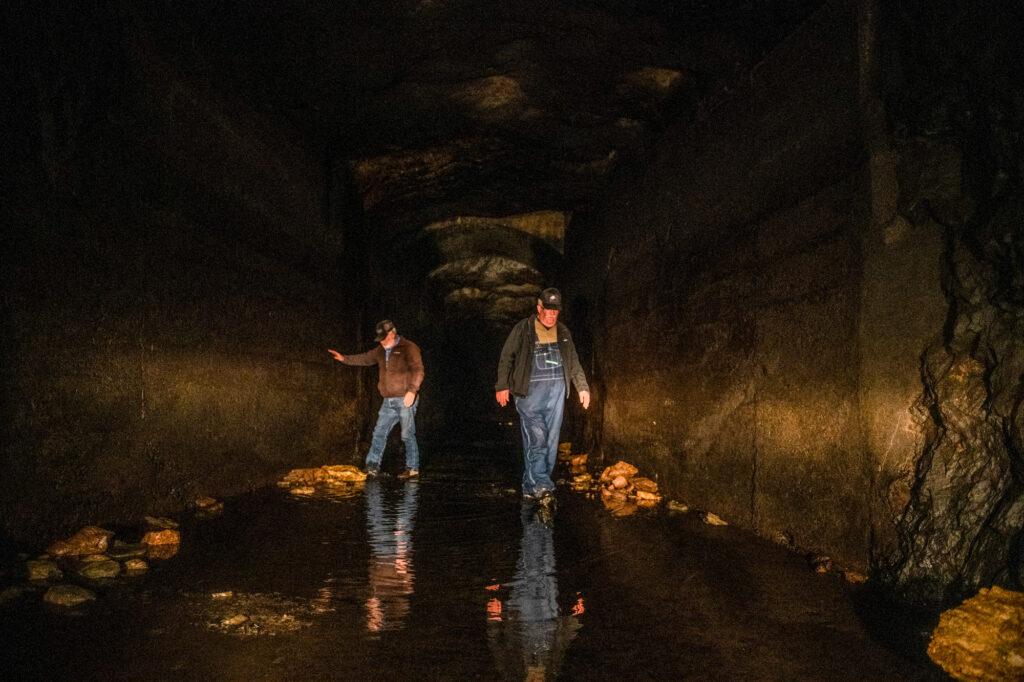
Soon, the Black Canyon of the Gunnison was thousands of feet above us. And I was doing my best to keep my cool, as little tight-space alarm bells flashed their warnings in my chest. The tunnel got smaller, with walls that alternated between smooth cement and jagged hard rock — like a black-and-white photo of an old-timey mine. We bumped along, stopping a few times to clear debris.
When the Gunnison Tunnel opened in 1909, it was the longest irrigation tunnel in the world. And it still provides water for thousands of people and farms each year. When I asked Dikeman what this piece of historic infrastructure means to him, he answered for the whole community.
“Everybody that lives here appreciates this tunnel, cause there wouldn’t be hardly anything here without it,” he replied.
This tunnel makes possible the fields of onions and wheat, and that summertime frenzy for sweet corn. Dikeman sounded pretty pleased that of all the people in Montrose, he was now one of the very few who’s seen inside.
After nearly six slow miles, I started to feel my low-key panic give way to more awe, maybe caught from the company around me. Animated, Dikeman talked about how amazed he was that crews dug the tunnel starting from either end, then met in the middle. They were only 4 inches off from each other.
“How do you do that?” Dikeman said, with wonder.
Finally, the Tunnel Limo rumbled to a stop. We climbed down and started walking through the dark, toward a door that seemed to offer all kinds of promise. As employees opened it, a burst of wind and sun shot through.
“The light at the end of the tunnel!” Dikeman exclaimed, as we all blinked into the brightness illuminating the Black Canyon of the Gunnison National Park before us.
The deep green of the Gunnison River rolled past. Huge rock walls loomed above. It was like we had stepped into another dimension. But Steve Anderson, who’d been riding in the truck cab, sounded just as impressed by all the darkness and mud we’d just left.
“It’s a beautiful spot in the world,” he said, with a jolly smile. “It is.”
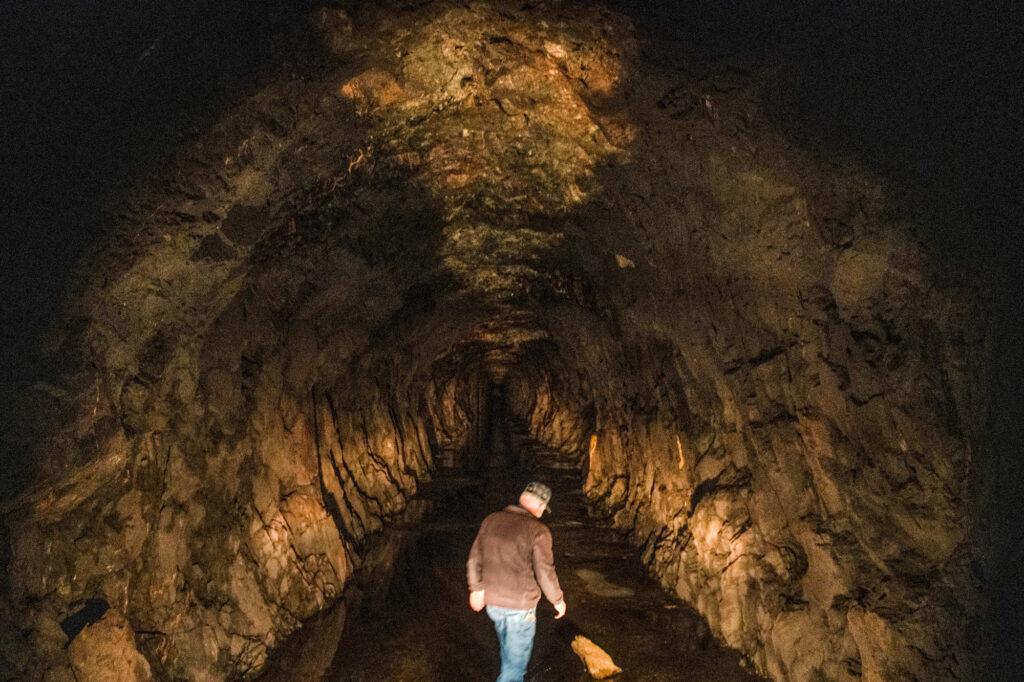
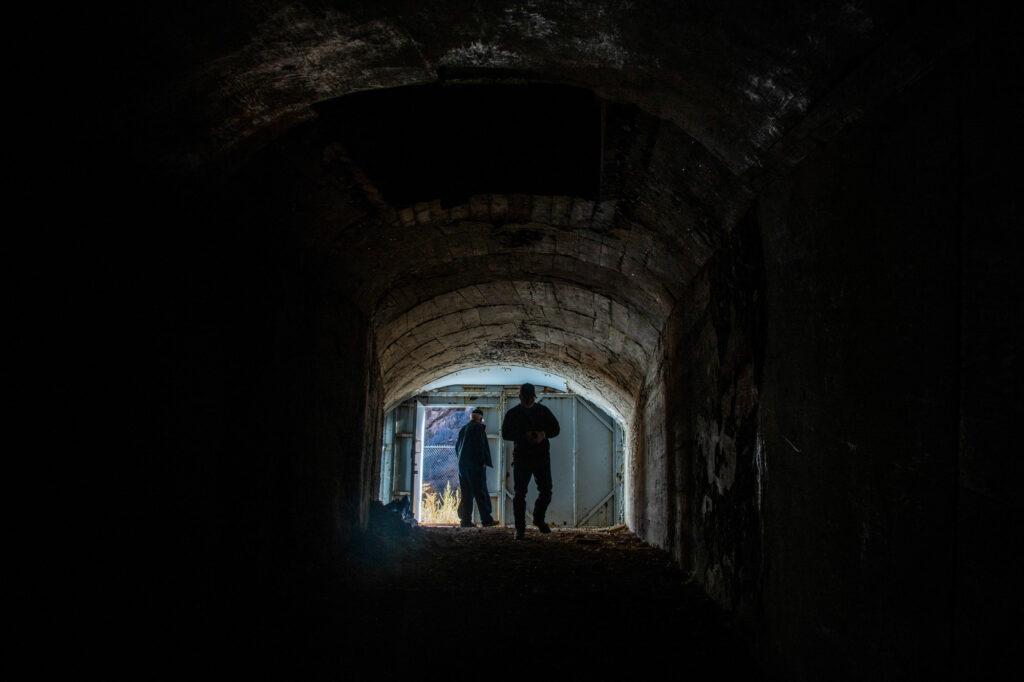
Anderson recently retired as the water users association manager, a job his father held, too. Also a fourth-generation farmer, he knows exactly how reliant this area is on the very water we were looking at.
“The value of that tunnel for our valleys, you know, is a constant reminder of what our forefathers did for us,” he went on.
And they did it with dynamite and pickaxes, mules and crude surveying instruments. Generations later, and 20 years into a historic drought, Anderson explained he doesn’t exactly know what the future of agriculture will look like in his community. But he has faith people here will figure it out.
After all, look at what they built.








